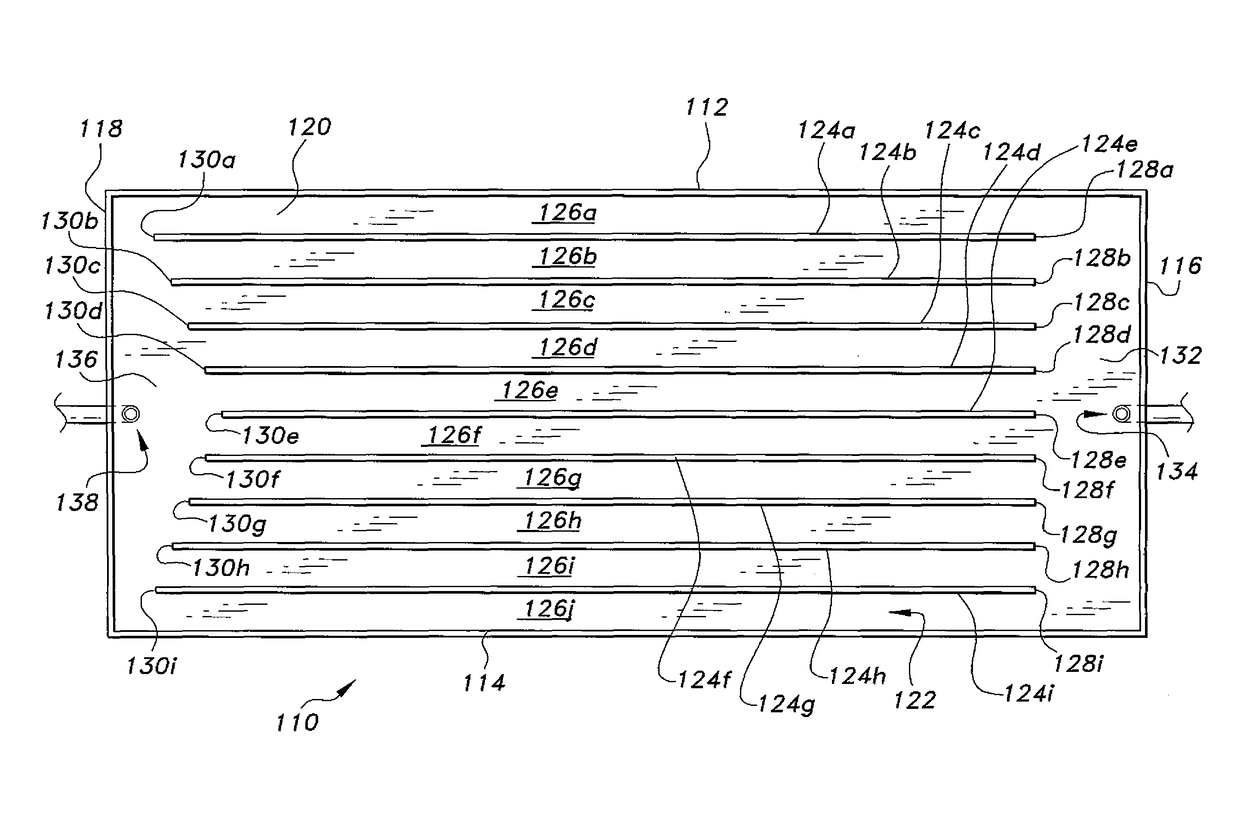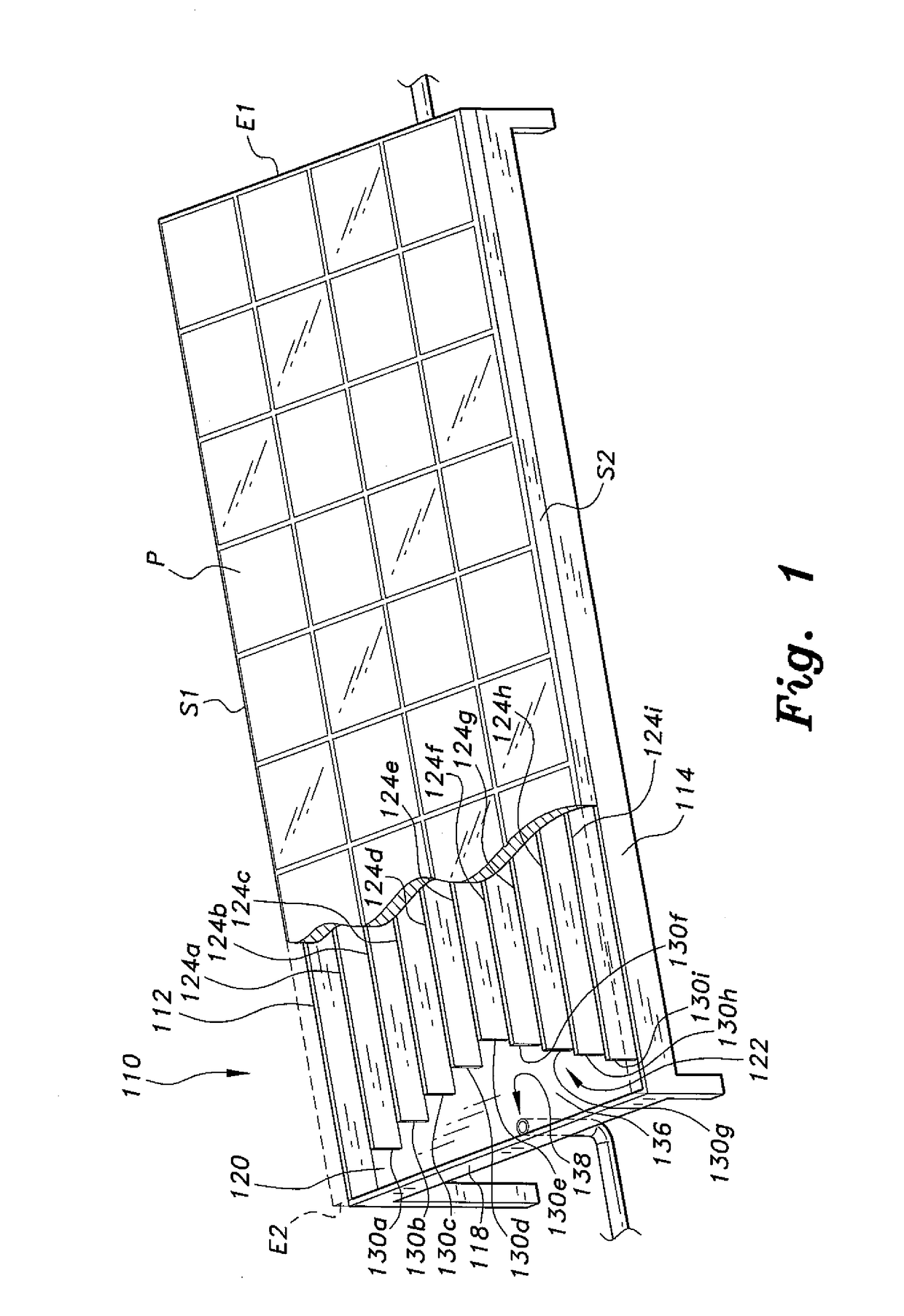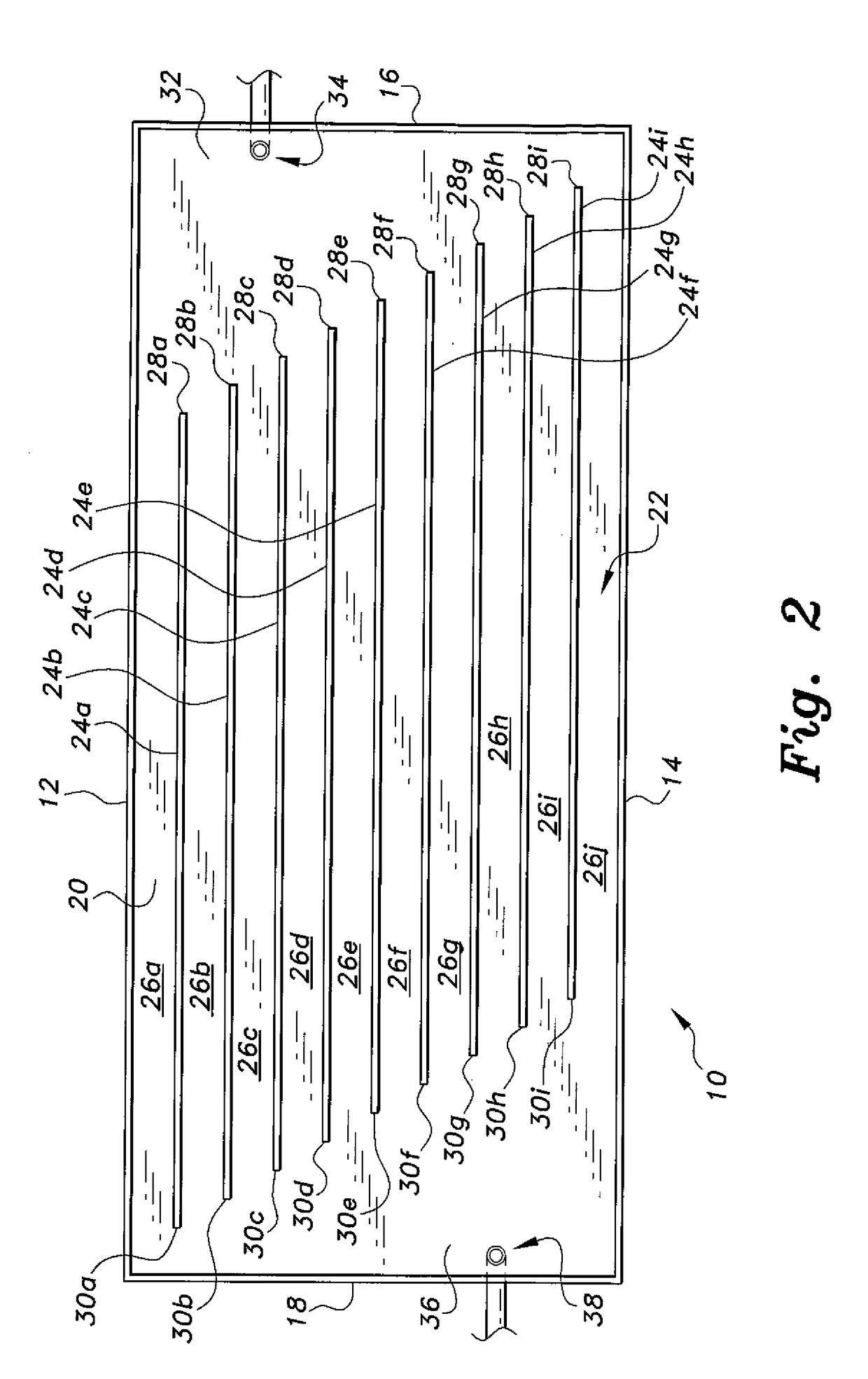Heat exchanger for photovoltaic panels
a heat exchanger and photovoltaic panel technology, applied in photovoltaic energy generation, photovoltaics, electrical apparatus, etc., can solve the problems of thermal stress development in the module, the flow is not uniformly distributed between the channels, and the module efficiency is reduced, so as to improve flow uniformity, reduce the average surface temperature, and reduce the temperature gradient
- Summary
- Abstract
- Description
- Claims
- Application Information
AI Technical Summary
Benefits of technology
Problems solved by technology
Method used
Image
Examples
Embodiment Construction
[0018]The heat exchanger for photovoltaic (PV) panels is a heat exchanger that maintains a uniform temperature for cooling PV modules. The heat exchanger is a box-shaped enclosure attached to the rear face of the PV panel. The enclosure has an inlet end, an outlet end, and a plurality of parallel baffles disposed between the ends defining a plurality of channels dividing fluid flow through the enclosure into parallel paths. The spaces between the ends of the baffles and the inlet and outlet ends define an inlet header and an outlet header. In one embodiment, the fluid inlet and outlet are disposed in diagonally opposite corners of the disclosure, opening into triangular input and output headers. In another embodiment, the fluid inlet and outlet are centered at the ends of the enclosure, and the outlet header is V-shaped with the vertex extending into the enclosure along its centerline.
[0019]The heat exchanger for photovoltaic panels includes two embodiments that were optimized accor...
PUM
 Login to View More
Login to View More Abstract
Description
Claims
Application Information
 Login to View More
Login to View More - R&D
- Intellectual Property
- Life Sciences
- Materials
- Tech Scout
- Unparalleled Data Quality
- Higher Quality Content
- 60% Fewer Hallucinations
Browse by: Latest US Patents, China's latest patents, Technical Efficacy Thesaurus, Application Domain, Technology Topic, Popular Technical Reports.
© 2025 PatSnap. All rights reserved.Legal|Privacy policy|Modern Slavery Act Transparency Statement|Sitemap|About US| Contact US: help@patsnap.com



